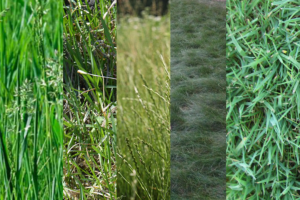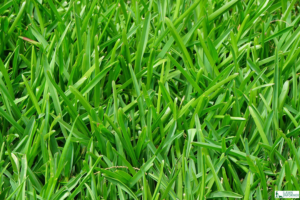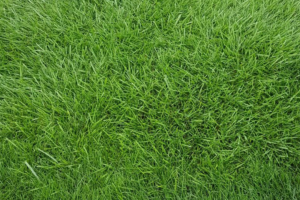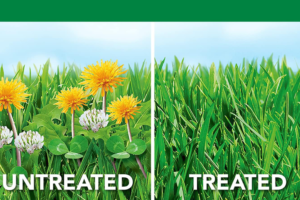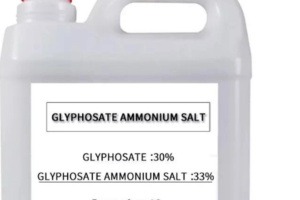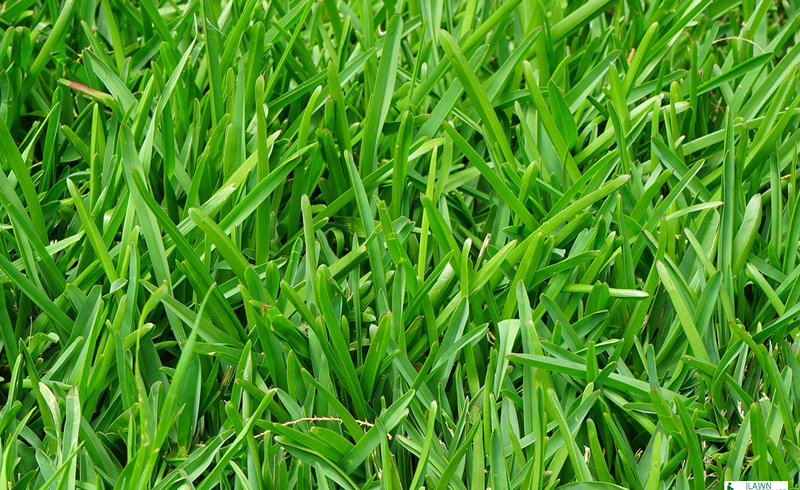
Introduction
The Beauty and Resilience of St. Augustine Grass
St. Augustine grass is a favorite among many homeowners, gardeners, and landscapers. Its thick, carpet-like texture and vibrant green hue make it a top choice for lawns across various regions. But like all plants, it has its needs. We often use nitrogen fertilizers and other lawn care practices to keep it lush and thriving. While effective, these methods have challenges, especially when considering the environment.
The Challenge: Balancing Lawn Health with Environmental Care
A lot happens beneath the surface whenever we water or fertilize our lawns. One of the key ingredients in many fertilizers is nitrogen, which helps our grass grow green and firm. However, too much can seep through the soil, potentially harming our environment. This process, known as “leaching,” is a concern for many. The study we’re delving into explores this very challenge: How can we care for our beloved St. Augustine grass without compromising the health of our environment?
The Science Behind the Green: Understanding Nitrogen
What is Nitrogen, and Why is it Essential for Your Lawn?
Nitrogen is the main course for your lawn’s diet. Just as we need food to grow and stay healthy, grasses like St. Augustine need nitrogen to flourish. It’s a key ingredient in the proteins and other vital components that make grass green and robust. When we talk about fertilizers, nitrogen is often a star player. It helps form amino acids, the building blocks of proteins and plays a crucial role in the grass’s metabolism. In simpler terms, the fuel powers your lawn’s vibrant green color and lush growth.
The Double-Edged Sword: Benefits and Challenges of Nitrogen in Fertilizers
While nitrogen is essential for a thriving lawn, it’s like adding salt to a dish – the right amount can enhance the flavor, but too much can ruin it. In gardening, too much nitrogen can lead to problems beneath the soil. Nitrogen, especially in the form of nitrates, can move or “leach” through the soil.
This is a concern because, on the one hand, we want our St. Augustine grass to absorb and benefit from nitrogen. On the other hand, we don’t want excess nitrogen seeping more profound into the ground, potentially reaching our water sources. It’s a balancing act – ensuring our lawns get the nutrition they need without unintentionally harming the environment.
Creating the Perfect Lawn: The Role of Maintenance Strategies
The Liquid Gold: Understanding Fertilizers and Their Impact
Every gardener knows fertilizers are like magic potions for lawns, giving them the nutrients they need to thrive. But not all fertilizers are created equal. Some are sprayed on as liquids, often by professional lawn care companies, while others come in granular form, which homeowners can quickly sprinkle on their lawns.
The type of fertilizer, especially its nitrogen content, can significantly impact how well St. Augustine grass grows. But there’s a catch: using too much or the wrong kind can lead to nitrogen “leaching” or seeping deep into the soil, which isn’t good for the environment.
Watering Wisely: The Role of Irrigation in Lawn Health
Water is life, especially for lawns. But how and when you water your St. Augustine grass can significantly affect its health and appearance. The study looked at different watering or “irrigation” schedules to see how they affected the grass and the movement of nitrogen in the soil. The findings?
Adjusting your watering routine based on the season can help reduce water use and prevent too much nitrogen from leaching into the ground. For instance, you might need to water less often during the wet season. It’s all about finding the right balance to keep your lawn looking its best while being eco-friendly.
The Research Deep Dive: What the Study Revealed
Setting Up the Study: The Field-Scale Facility and Its Purpose
Scientists set up experiments in controlled environments when they want to understand something in detail. This study built a unique facility in South Florida to closely examine how different lawn care practices affect St. Augustine grass, especially regarding nitrogen leaching.
Think of this facility as a giant outdoor laboratory designed to mimic real-world conditions. Here, researchers could test various fertilization and watering routines, all while monitoring how the grass responded and how much nitrogen seeped through the soil. It’s like putting lawn care methods to the ultimate test to see which ones genuinely shine.
Key Findings: The Balance of Fertilization and Watering
The results from the study were eye-opening. For starters, the amount of nitrogen applied and the organic content in the soil played a significant role in how much nitrogen ended up leaching. Over-fertilizing, especially at double the recommended rate, led to much more nitrogen seeping into the ground. Conversely, using half the recommended amount didn’t necessarily reduce this leaching.
The study also found that controlled-release nitrogen sources, like certain fertilizers, didn’t necessarily reduce nitrogen leaching. However, adjusting watering routines based on the season did make a difference. For gardeners, this means that both how you fertilize and water are crucial in ensuring a healthy lawn and environment.
Practical Takeaways for Gardeners and Landscapers
Optimizing Fertilization: Less Can Be More
When fertilizing your St. Augustine grass, it’s essential to strike the right balance. The study found that over-fertilizing, especially at double the recommended rate, can lead to more nitrogen seeping deep into the ground, which isn’t good for the environment. But here’s the catch: using only half the recommended amount doesn’t necessarily reduce this leaching.
The key takeaway? It’s not just about the amount of fertilizer you use but also the type. Gardeners should be mindful of the nitrogen sources in their fertilizers and consider using controlled-release options, which might offer better results without harming the environment.
Smart Watering: Seasonal Adjustments Make a Difference
Watering your lawn might seem like a straightforward task, but the study revealed that there’s more to it than meets the eye. Adjusting your watering routine based on the season can help reduce water use and prevent too much nitrogen from leaching into the ground. For instance, you might need to water less often during the wet season.
This doesn’t just benefit the environment; it’s also suitable for your grass. Overwatering can lead to other lawn issues, like fungal diseases. The bottom line? Be observant and adjust your watering habits according to the season and your needs.
The Future of Lawn Care: What’s Next?
The Ongoing Quest for Balance: Lawn Beauty and Environmental Responsibility
As gardeners and landscapers, our love for lush, green lawns is undeniable. But the study on St. Augustine grass and nitrogen leaching reminds us of a bigger picture to consider. The health of our environment is intertwined with our lawn care practices. The research has shed light on the effects of fertilization and watering, but the journey doesn’t end here.
Scientists and experts continuously explore new methods and techniques to ensure our lawns remain beautiful without compromising the environment. The future of lawn care is not just about aesthetics; it’s about finding that perfect balance where our lawns and the environment coexist harmoniously.
Innovations on the Horizon: New Research and Lawn Care Techniques
The world of lawn care is ever-evolving. With technological advancements and research, we can expect new products, tools, and techniques to emerge. We’ll see fertilizers that are even more efficient in delivering nutrients without the risk of leaching. Or smart irrigation systems could adjust watering schedules in real-time based on soil conditions and weather forecasts.
The possibilities are endless. For gardeners and landscapers, this means staying informed and being open to adopting new practices. By embracing innovation and prioritizing sustainability, we can ensure that the future of lawn care is bright, green, and environmentally friendly.
FAQ’s
What is the main focus of this study?
The study primarily investigates how different lawn maintenance strategies affect nitrogen leaching and the health of St. Augustine grass.
How does nitrogen affect St. Augustine grass?
Nitrogen is a vital nutrient for St. Augustine grass, influencing its growth, color, and overall health. However, excessive nitrogen can lead to environmental issues like groundwater contamination.
What are the critical maintenance strategies discussed?
The study delves into various strategies, including different irrigation methods, nitrogen sources, and application rates, to understand their impact on nitrogen leaching and grass health.
How does the study suggest managing nitrogen application?
The research emphasizes the importance of using the right amount of nitrogen, choosing the appropriate nitrogen source, and optimizing irrigation practices to ensure a healthy lawn while minimizing environmental impact.
What are the environmental concerns related to nitrogen leaching?
Excessive nitrogen leaching can contaminate groundwater, affecting water quality and harming aquatic ecosystems. Proper lawn maintenance can reduce this risk.
Why is nitrogen essential for lawns?
Nitrogen is a primary nutrient for plants, playing a crucial role in their growth and development. For lawns, it helps promote lush green growth, strengthen grass blades, and improve overall turf density.
Can I use any type of fertilizer for my St. Augustine grass?
While St. Augustine grass benefits from nitrogen, choosing a fertilizer specifically formulated for it is essential. Different grass types have unique nutrient needs, and using the wrong fertilizer can lead to poor growth or damage.
How often should I fertilize my St. Augustine lawn?
Typically, St. Augustine grass benefits from fertilization 2-4 times a year, depending on soil quality and other environmental factors. It’s best to follow product recommendations and consider soil tests to determine the exact needs of your lawn.
Conclusion
The Journey to a Sustainable Lawn
Every gardener and landscaper dream of a lawn that’s both a sight to behold and sustainable and environmentally friendly. The study on St. Augustine grass and nitrogen leaching has provided valuable insights into achieving this dream. It’s clear that while nitrogen is essential for our lawns, how we apply it and what amounts can make a significant difference.
The right balance ensures our grass remains lush and green without adverse environmental effects. It’s a reminder that lawn care isn’t just about aesthetics; it’s about responsibility. As caretakers of our green spaces, we must ensure that our practices benefit our lawns and the world around us.
Looking Ahead: The Future of Eco-Friendly Lawn Care
The research has paved the way for a new era of lawn care that prioritizes beauty and sustainability. As we move forward, gardeners and landscapers can be equipped with better knowledge, tools, and techniques to care for their St. Augustine lawns.
The potential for innovations, from eco-friendly fertilizers to intelligent irrigation systems, is vast. With continued research and a commitment to best practices, we can look forward to a future where our lawns are beautiful and in harmony with nature. It’s an exciting prospect that promises a greener, brighter future for all.
Citation Credit:
Park, Dara. (2023). Nitrogen leaching and St. Augustine grass turf response to lawn maintenance strategies. [microform] /.

Bob Green, a passionate lawn care enthusiast with over two decades of landscaping experience, is this website’s proud owner. His vast knowledge of horticulture and dedication to helping homeowners maintain beautiful lawns are reflected in the valuable content he shares on his platform. John has always been interested in Agrostology.









